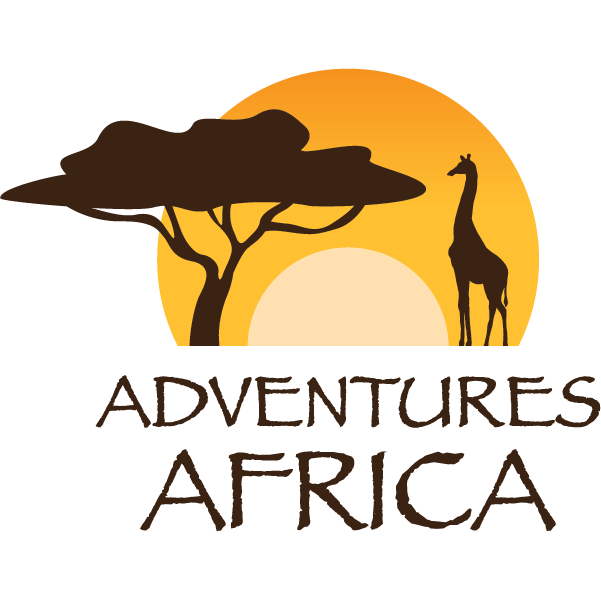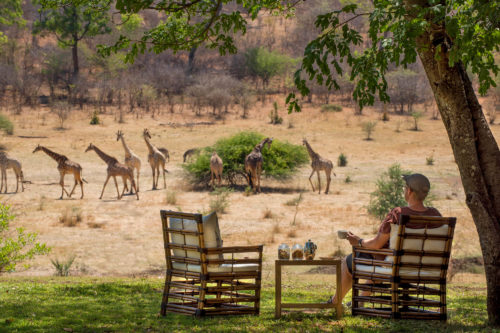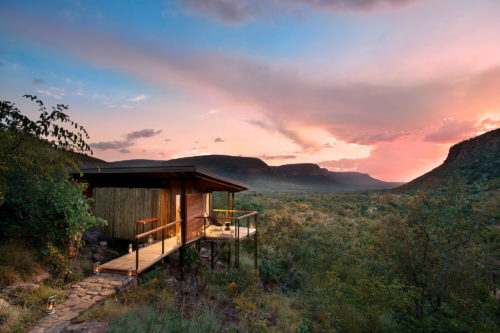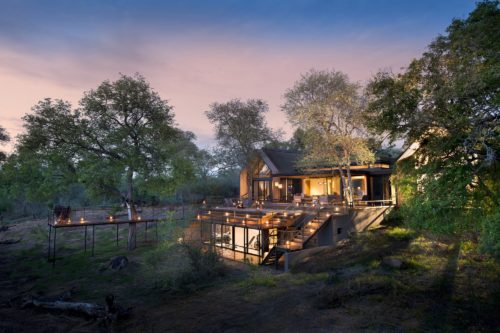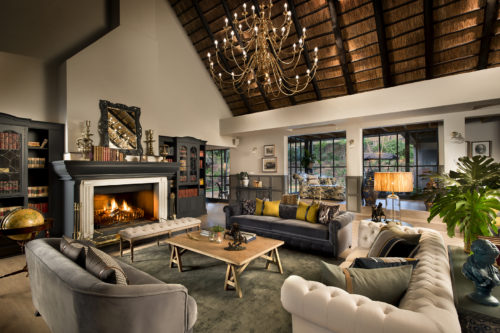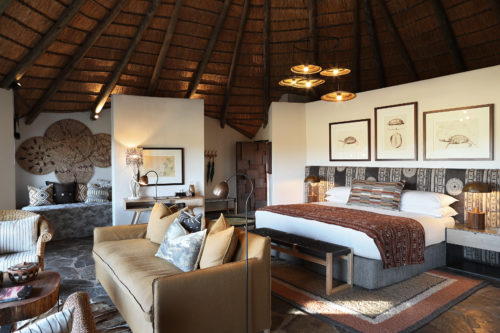NATURE in Africa
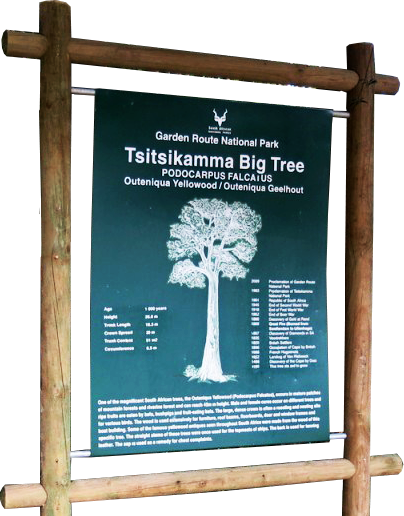
Tsitsikamma Forest’s Big Tree
The Big Tree is exactly what it claims to be. This giant Outeniqua Yellowwood (Podocarpus Falcatus) is a magnificent part of creation, being some 800 years old and towering at an impressive height of 36.6 metres. Trunk length is 18.3m and it takes 8 adults holding hands around the girth.
The Outeniqua Yellowwood favours mature forests (mountain or riverine) and provide edible fruits to bats and bushpigs. They are also home to a number of different bird species.
A 500m wooden boardwalk through indigenous forest leads to the Yellowwood giant. From there you can continue along the path for up to just over 4km walk to more big trees and fallen giants.
Three routes have been laid out and colour coded with red (4.2km), yellow (2.6km) and green (1km) footprints giving a choice of walking distances.
Wild Coast Region, Eastern Cape
As it takes you through the former Transkei Region, this route offers various hiking, camping and aquatic experiences await you, while the local crafts markets make for immaculate souvenirs…Look no further than Port St Johns, the jewel of the Wild Coast, if you wish to become one with nature.
Surrounded by towering cliffs, covered in dense indigenous forest with beautiful beaches stretching to the north and south, Port St Johns is a relaxed town with sub-tropical weather making it a year round Wild Coast destination. This is one of South Africa’s most unspoilt areas, a vast stretch of undulating hills, lush forest and spectacular beaches skirting a section of the Indian Ocean.
Scattered along the coastal route are the villages of Coffee Bay and Hole-In-The-Wall. The homely lodges and bars, excellent fishing and breath-taking hikes culminate in a beachcomber’s dream. Explore the region by helicopter or canoe, take a boat trip to view the whales or watch the dolphins in the surf while you fish, the Wild Coast will take your breath away.
Victoria Falls – the Smoke that Thunders
Victoria Falls is one of the Seven Natural Wonders of the World. Statistically speaking, it is the largest waterfall in the world. It was described by the Kololo tribe living in the area in the 1800’s as ‘Mosi-oa-Tunya’ – ‘The Smoke that Thunders’. The Zambezi River, which is more than 2 km wide at this point, plunges noisily down a series of basalt gorges and raises an iridescent mist that can be seen more than 20 km away. In more modern terms Victoria Falls is known as the greatest curtain of falling water in the world.
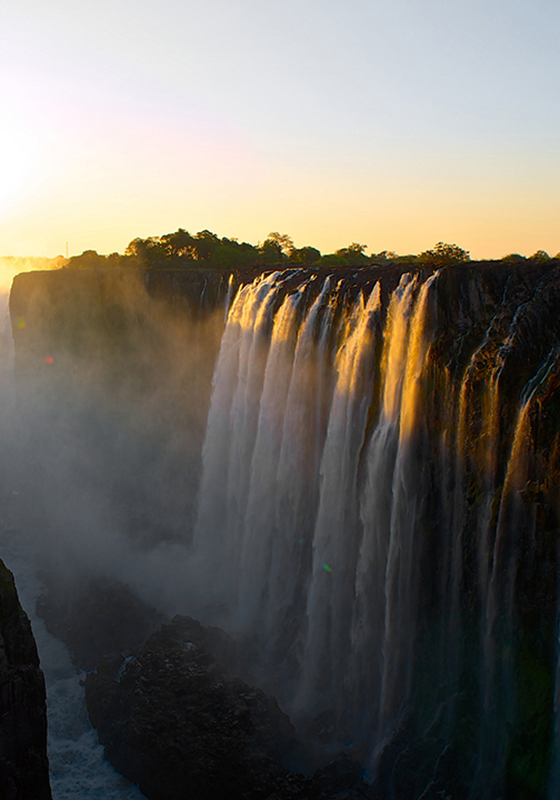
Victoria Falls is located on the border between Zambia and Zimbabwe, and travelers can access the falls through either Livingstone, Zambia or Victoria Falls, Zimbabwe.
By the end of the 1990s almost 400,000 people were visiting the falls annually, and this was expected to rise to over a million in the next decade. Remarkably preserved in its natural state, Victoria falls inspires visitors as much today as it did David Livingstone in the 1860’s. The falls and the surrounding area have been declared National Parks and a World Heritage Site, thus preserving the area from excessive commercialisation.
| Victoria Falls | |
|---|---|
| Loacation | Livingstone (Zambia) and Victoria Falls (Zimbabwe) |
| Total height | 355 ft (108 m) (at center) |
| Number of drops | 1 |
| Watercourse | Zambezi River |
| Average flow rate | 1088 m3/s (38.430 cu ft/s) |
Cape Floral Region – South Africa
The Cape Floral Region has been called the world’s hottest hot-spot for plant diversity and endemism. Its flora is so diverse and unique that it warrants classification as one the world’s six principal floristic regions. In less than 0.38% of the area of Africa it has nearly 20% of the continent’s flora and five of its twelve endemic families.
The region was the sixth South African site to be inscribed on the World Heritage List of the United Nations Educational, Scientific and Cultural Organisation (Unesco). South Africa has the third-highest level of biodiversity in the world, thanks in no small part to the Cape floral kingdom. The Table Mountain National Park alone has more plant species within its 22 000 hectares than the whole British Isles or New Zealand.
- The Table Mountain National Park (this region alone is home to more floral species than the whole of New Zealand)
- The Cederberg Wilderness Area
- The Groot Winterhoek Wilderness Area
- The Boland Mountain Complex (this includes the Kogelberg Nature Reserve, Jonkershoek Nature Reserve, Assegaaibosch Nature Reserve, Hottentots Holland Nature Reserve, and Limietberg Nature Reserve)
- The De Hoop Nature Reserve
- The Boosmansbos Wilderness Area
- The Swartberg Complex (which comprises the Swartberg Nature Reserve, Gamkapoort Nature Reserve, and Towerkop Nature Reserve)
- The Baviaanskloof Mega Reserve
Mana Pools National Park – Zimbabwe
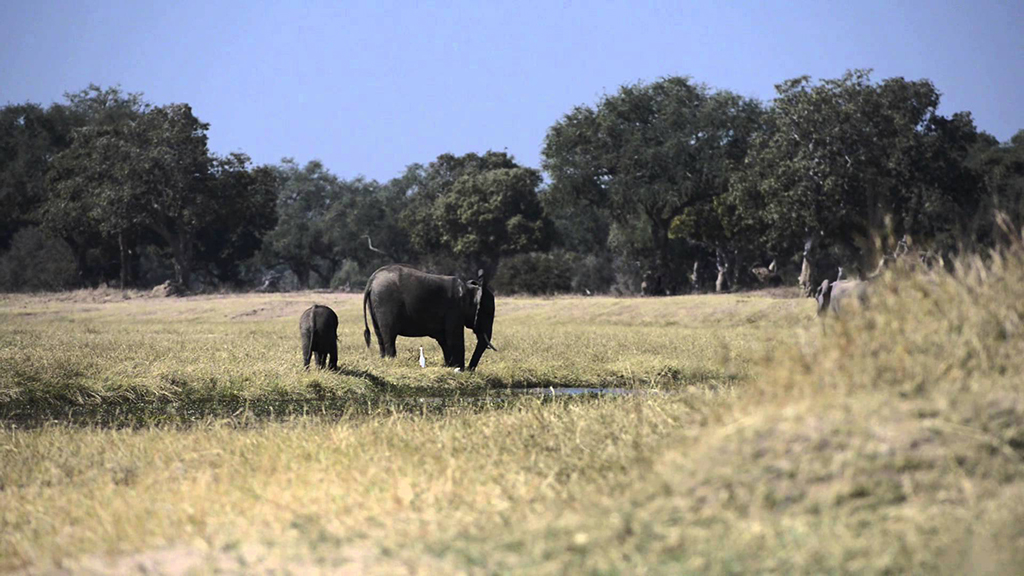
This unique park is a WORLD HERITAGE SITE, based on its wildness and beauty, together with the wide range of large mammals, over 350 bird species and aquatic wildlife. Mana Pools is one of Zimbabwe’s most popular parks, and it is easy to see why it falls into this profile.
As one moves northwards towards the Zambezi River from the forests on the Karoo sediments, the vegetation changes to open Faidherbia albida woodlands on the old river terraces. This vegetation gives an unique look to the area and a surreal light filters through the trees giving Mana Pools its distinctive cathedral-like atmosphere.
This privilege of walking alone in an area with dangerous wildlife is unique in Zimbabwe. Elephant, eland, buffalo, impala, waterbuck, baboons, monkeys, zebra, warthog and hippo are some of the larger herbivores to be seen regularly on the river terraces as they come out to eat the fallen Albida fruit.
Tourist facilities include lodges, a communal campsite with ablution facilities and exclusive campsites where the visitor can be alone.

